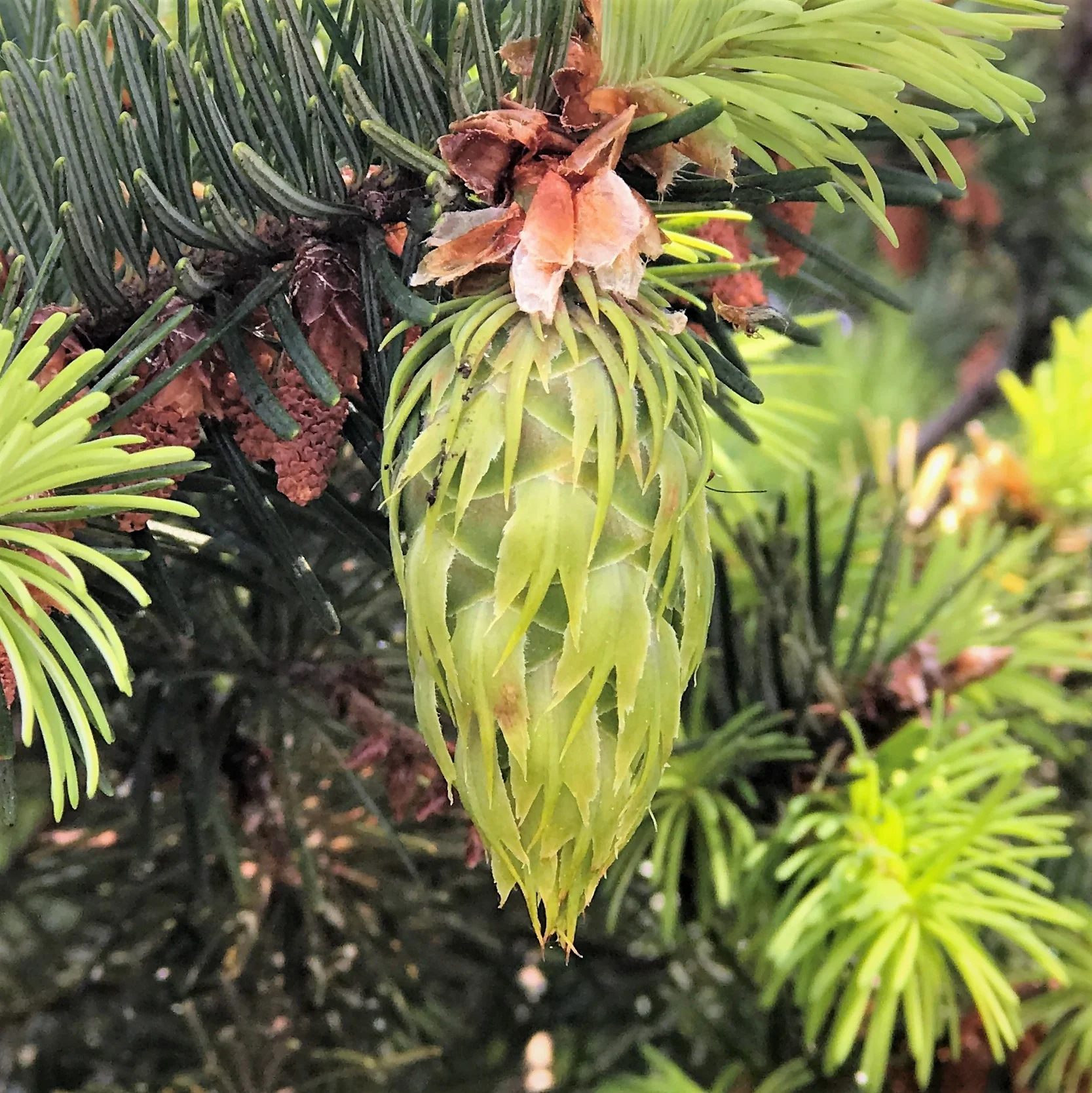Where I live, I can see many large Douglas-firs (Pseudotsuga menziesii) just by glancing out the window.
A number of these trees are loaded with brown cones, at least in the upper reaches. The brown cones are leftovers from last year or prior years. New Douglas-fir cones are bright green.
This year, I do not see any new green cones on the Douglas-firs in my neck of the woods. And I covered a lot of ground this spring and have seen no cones anywhere around here.
Where are the Douglas-fir cones? Is this the right season to see them?
This is what a green Douglas-fir cone looks like. I took this picture while on Lopez Island recently. There, I saw many Douglas-firs with new green cones like this.
The cone in this photo is a female cone, also called a seed cone. Earlier in this cone’s life, wind-blown pollen from male Douglas-fir cones fertilized each of the many ovules inside this seed cone. Press here for more information about female and male cones.
After pollination, the fertilized ovules develop into seeds. The seeds will keep developing until they mature in the fall.
Dry fall weather will cause the cone scales to open, allowing the seeds to fall out. Sometimes, Douglas squirrels or other small animals help open the cones to eat the seeds.
Douglas-firs, like many conifers, produce large crops of cones in cycles, once every half-dozen years or so. Where I live, this year seems like an off year. Press here for more information about cone cycles.
Do you see green Douglas-fir cones when you look out the window? Or are they absent where you live too?

